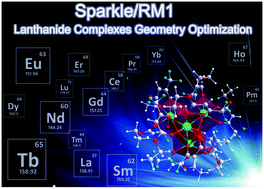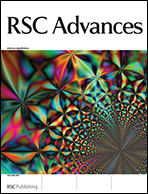Sparkle/RM1 parameters for the semiempirical quantum chemical calculation of lanthanide complexes†
Abstract
In this article, we present Sparkle Model parameters to be used with RM1, presently one of the most accurate and widely used semiempirical molecular orbital models based exclusively on monoatomic parameters, for systems containing H, C, N, O, P, S, F, Cl, Br, and I. Accordingly, we used the geometries of 169 high quality crystallographic structures of complexes for the training set, and 435 more for the validation of the parameterization for the whole lanthanide series, from La(III) to Lu(III). The distance deviations appear to be random around a mean for all lanthanides. The average unsigned error for Sparkle/RM1 for the distances between the metal ion and its coordinating atoms is 0.065 Å for all lanthanides, ranging from a minimum of 0.056 Å for Pm(III) to 0.074 Å for Ce(III), making Sparkle/RM1 a balanced method across the lanthanide series. Moreover, a detailed analysis of all results indicates that Sparkle/RM1 is particularly accurate in the prediction of lanthanide


 Please wait while we load your content...
Please wait while we load your content...